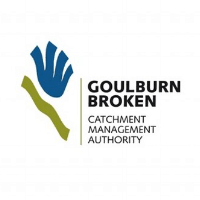Fox Control Monitoring Program
To monitor the abundance of foxes, the King Parrot Catchment Fox Control Project (KPCFCP) has been running an annual program using remote sensor cameras on the properties of KPCFCP participants. This year we had 51 cameras installed on 39 properties.

Fox at Flowerdale

Fox at Flowerdale
Compared with 2018 the latest round of monitoring showed fox numbers are stable on the properties in the lower King Parrot Creek catchment (Strath Creek) and encouragingly down by about 35% in the upper catchment (Kinglake). A concerning result was an increase in fox numbers by around 50% in the middle catchment (Flowerdale).
These results were not unexpected as the Kinglake and Strath Creek areas have had the highest proportion of KPCFCP participants involved in our baiting programs or actively undertaking other methods of fox control. However Flowerdale is an area where it appears the actual control of foxes needs to increase.
The monitoring also recorded a variety of native animals that are vulnerable to predation by foxes. Three observations of the endangered Brush-tailed Phascogales were recorded on camera around Strath Creek.

The threatened Brush-tailed Phascogale at Strath Creek.
We had 35 observations of Lyrebirds on Kinglake properties; and 35 observations of Long-nosed Bandicoots in Kinglake. Up from 11 in 2018.

Lyrebird at Kinglake West

Long-nosed Bandicoot at Kinglake West
We also noticed a good increase in the upper catchment of other native mammals vulnerable to foxes including Bobuck, the native Bush Rat and Agile Antichinus.

The native Bush Rat at Kinglake West

A pair of Bobucks (Mountain Brush-tailed Possum) at Pheasant Creek.
Interesting ground dwelling birds photographed included Lewins Rail (a threatened species), Bassian Thrush, Olive Whistler and Satin Bowerbird.

The threatened Lewins Rail

The Olive Whistler photographed along the Stony Creek.
The camera monitoring also showed up other pest species in the environment such as feral cats and deer.
To find out more about the King Parrot Catchment Fox Control Project phone Chris Cobern on 0413 855 490 or email ugln.projects@ugln.net

A black Feral Cat

Sambar Deer at Kinglake





Brilliant field work, great photos. Congrats to all concerned.
Thanks Phil. It’d be great if we could get a similar project going with the Cathedral Landcare Group.
Great work Chris. It is cheering to get such good observations of indigenous fauna as well as recording the prevalence of pest animals.
I’m glad to hear it’s cheered you up Rog.?
keep up the good work, it good to hear the results Don
Chris keep up the good work, it good to see you are getting rid of allot of foxes. Don
No worries Don and thank you for participating in our monitoring and baiting programs. ?
Chris, exceptional work, your enthusiasm and tenacity is necessary. Many people are still not aware of the threat to native species by introduced animals. We are lucky rabbits aren’t carnivores, BUT They still can have a devastating effect on the land with a knock on impact on native species.
Thanks Debbie and thank you for being involved in our fox control project monitoring and baiting programs. ?